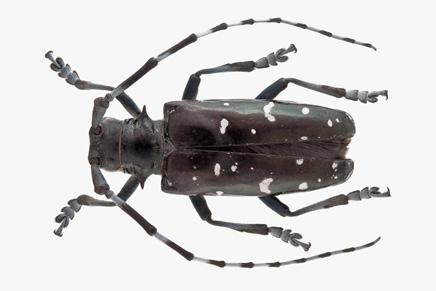The Asian Longhorned Beetle
The Asian Longhorned Beetle is known to most commonly infest maple trees, but this invasive species from eastern China and Korea has also been know to infest elm trees, willows, poplars, horse-chestnut trees, and more. Here in North America, specifically The Bay Area and Central California, they have few, if any predators.
The pest can be identified by its black color with white specks and long antenna.

The Asian Longhorned Beetle burrows into hardwood trees to lay its eggs. Once the eggs develop into larvae, the larvae dig under the bark and eat the living tree tissue starving the tree.
When the larvae develop into full grown Asian Longhorned Beetles they tend to lay new eggs in the same tree they were born in, but some studies have shown that they are capable of flying several miles in search of a new tree if necessary.
Prevention and control of the Asian Longhorned Beatle can be tricky and it is normally in your best interest to have an expert take a look and see how far the infestation has gone. Treatments can range from spraying to systemic treatment all the way to a need to remove the infected tree depending on the degree that the infestation has spread. Containing the outbreak is imperative and we suggest that if you believe that you are dealing with a Asian Longhorned Beatle pest infestation that you get a consultation immediately.







